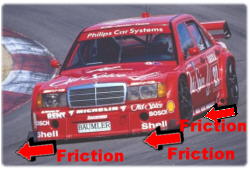

Whenever anything moves,
there's usually some form of friction trying to stop it.
Friction is sometimes useful, at other times it's a problem.
There are two main types of friction:-
| 1.
"Static" or "sliding" friction
This type of friction occurs when dry surfaces rub together. The frictional force depends only on:-
|
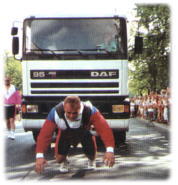 Friction makes this lorry difficult to move, but it does help by giving the man a good grip on the road. |
|
In this diagram, the weight of the block provides the force pressing the surfaces together. Watch the animation carefully: If this picture isn't moving, click
on "Refresh"/"Reload"
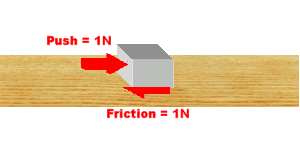
If
we push the block harder and harder, the frictional force will increase,
until it reaches a maximum (in this case, 2.5N). |
We can calculate the maximum frictional force using F=mN Where
|
| 2.
"Fluid" friction
This type of
friction is what happens with liquids and gases Fluid friction
is also known as "drag". On aircraft it's also called
"air resistance".
A
thin, runny liquid has a low viscosity. |
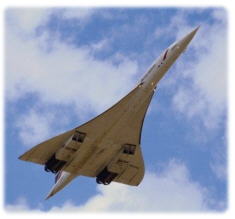 |
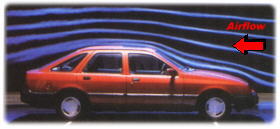 |
Aircraft and car designers want to reduce drag, so that the vehicle can go fast without having to waste too much fuel. To reduce drag,
we need a shape that the fluid can flow past easily and smoothly,
without any swirls (called "eddies"). This tends
to mean using long, pointed, "streamlined" shapes. |
|
Terminal velocity When an object
falls, it accelerates. As its speed increases, the air resistance
increases. Terminal velocity depends on the drag, so a streamlined shape will fall quickly, whilst a parachute will fall slowly. |
For a free-fall parachutist, before the parachute opens, terminal velocity is around 120 miles per hour. When the parachute opens, the terminal velocity decreases to only a few miles per hour - a much better way to hit the ground! |
Reducing friction
|
Friction can be a nuisance, because it changes kinetic energy into heat which is usually wasted. Friction also tends to wear away at the surfaces, causing damage. We can reduce friction by oiling ("lubricating") the surfaces. This means that the surfaces no longer rub directly on each other, but slide past on a layer of oil. It's now much easier to move them. |
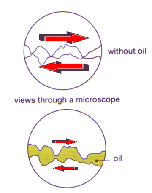 |
|
Hovercraft ride
on a cushion of air, which reduces the drag dramatically compared
to the drag on the hull of a ship. "Air Hockey" tables in amusement arcades use the same principle. The puck goes a long way when you hit it, because there's almost no friction to slow it down. |
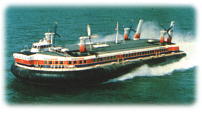 |
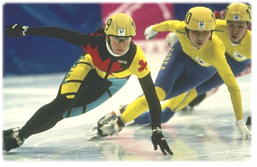
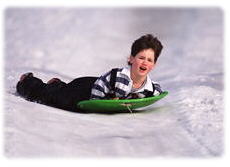 |
In winter sports,
we need friction to be as low as possible so that we can achieve
high speeds. |
|
Other methods of reducing friction include:-
|
|
Using friction
|
Friction provides the force to accelerate, stop or change the direction of the car. Ice and water on the road reduce this friction, and make is easier to skid. |
|
Friction Questions: (Click on the questions to reveal the answers) 1. What does dry friction depend upon?2. What is another name for fluid friction? 3. What does fluid friction depend upon? 4. Why do we oil machinery?(use the word "friction" in your answer). 5. Why does a falling object reach a "terminal velocity"? |
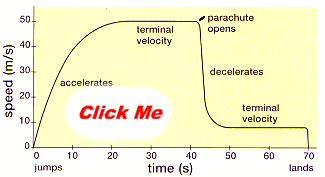
 using "ball bearings" or
"roller bearings", where balls or rollers allow the
surface to move easily without actually touching each other
using "ball bearings" or
"roller bearings", where balls or rollers allow the
surface to move easily without actually touching each other We
use friction to help us grip. This means that our shoes grip the
floor, so we don't fall over.
We
use friction to help us grip. This means that our shoes grip the
floor, so we don't fall over. 